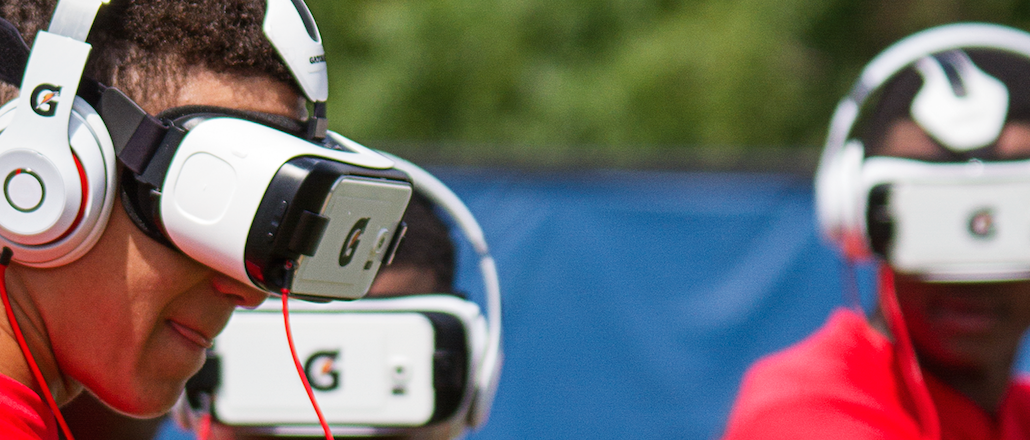
USA Today Network is betting that virtual reality will eventually go from hype to reality — and that advertisers will want in on it.
For the USA Today Network, which includes the flagship USA Today plus 92 smaller local newspapers, Gannett is launching GET Creative. The studio will aim to create all types of branded content for advertisers, from sponsored articles to online videos. But as virtual reality and 360-degree video content grows in importance at the publisher, GET Creative will also open up this capability to advertisers.
GET Creative is led by Kelly Andresen, a Washington Post digital ad vet who joined Gannett as its vp of branded content. Included in her staff of about 10 are two devoted exclusively to VR and 360-degree video. GET Creative expects to collaborate with USA Today’s applied technology staff and its video production team, which already has four staffers dedicated to VR.
Gannett is no stranger to VR, having produced 41 pieces of editorial content across its portfolio since 2014. One, the Des Moines Register’s “Harvest of Change,” which explored the state of Iowa agriculture, received an Edward R. Murrow award. “Harvest of Change” and “Iowa State Fair Soapbox,” another Des Moines Register/Gannett VR/360 project, won “Best Use of Technology in Journalism” from the National Press Foundation. “Blue Angels,” a 360-degree video from USA Today, has been viewed more than 11.4 million t on Facebook.
These early successes in VR content — in addition to a deep bench that knows how to create such content — make GET Creative confident in its ability to bring more advertisers to the world of immersive video.
“Everyone is really interested in it and asking how they can get involved,” said Andresen. “All of those questions still need to be answered, but it’s created an opportunity for us to shape what [native VR] can look like.”
GET Creative hasn’t sold any VR campaigns to advertisers yet, but Andresen said it’s been talking to several brands and agencies about creating VR and 360-degree video content, adding that the topic comes up with advertisers on a daily basis.
In terms of distribution, one advantage GET Creative has is its reach. A 360-degree video, which users can watch on a flat screen, interacting with the image with their hands or a mouse, could be distributed across the entire USA Today Network as well as 360 degree-compatible platforms like YouTube and Facebook.
For actual VR content, which requires the user to have a headset, USA Today has a VR Stories app, to which it plans to add a section for branded content. It’s also integrating the ability to watch VR videos on USA Today’s main app, which has been downloaded more than 22 million times.
The big question with VR, and to a lesser extent 360-degree video, is whether it’s scaleable or just the latest content and tech gimmick in danger of going the way of 3D TVs. Many companies, from Facebook and Google to The New York Times in addition to Gannett, are betting that VR will play a big role in the future of content.
In Gannett’s case, Andresen sees scale coming from adoption in 360-degree video, which is easily available on Facebook and YouTube. “In creating VR content, a byproduct is 360-video, which you can distribute at scale,” she said. “That will encourage the audience to upgrade, especially as more headsets become available.”
More in Media

The accidental guardian: How Cloudflare’s Matthew Prince became publishing’s unexpected defender
Cloudflare’s day job is fending off botnets and nation-state cyberattacks, not debating how Google and other AI firms crawl publisher sites.

A timeline of the major deals between publishers and AI tech companies in 2025
Here’s a list of all the major deals signed between publishers and AI tech companies in 2025.

No playbook, just pressure: Publishers eye the rise of agentic browsers
For the bulk of publishers, Google is, as ever, the one to watch. It’s already got agentic features within its Chrome browser, but that’s the tip of the iceberg, some say.





